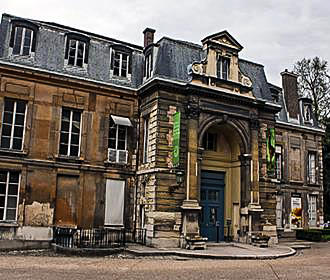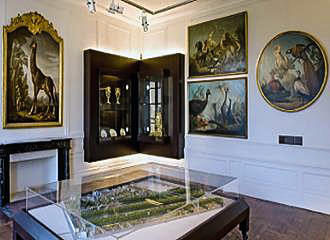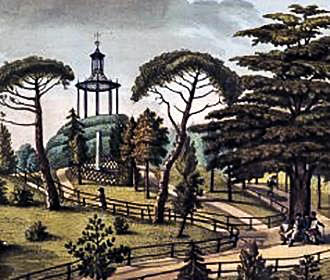This location is now closed.
The following article is left as-is for historical and archiving purposes.
Paris Cabinet d’Histoire du Jardin des Plantes
This museum retraces the history of the botanical gardens from its inception as a royal garden almost 400 years ago through to the current day with numerous rare and valuable items on display, however, this is currently CLOSED to the public.
Cabinet d’Histoire du Jardin des Plantes history
The Hotel Magny was constructed by the architect Pierre Bullet in 1696, and it got its name from the family who owned it in the mid 1700s. And at this time, it was the Comte de Buffon who was in charge of the Jardin du Roi, which was the royal botanical gardens, and the mansion house was located on the outskirts of this.
So, Buffon decided to persuade King Louis XVI to purchase the property, which he did so in 1787, and the Hotel Magny became a part of what is now known as the Jardin des Plantes with offices and living rooms for stewards, gardeners and directors to meet.
The Hotel Magny has been extensively renovated and has been classified as an historical Paris monument, and on the ground floor of this fabulous mansion house the museum called the Cabinet d’Histoire du Jardin des Plantes first opened its doors to the public in 2008, although as of 2018 it has closed to the public.
About the Cabinet d’Histoire du Jardin des Plantes Museum
The unique atmosphere of the Hotel Magny is a wonderful and very appropriate setting for this Paris museum that retraces the history of the Jardin des Plantes from its inception in 1626 with the first botanical and medicinal plants, through to its expansion and the key events that have taken place over the past four centuries.
At the entrance to the Paris Cabinet d’Histoire du Jardin des Plantes museum is a bell from the chapel of the royal garden would welcome you, which is the oldest example in existence. And then you would go into the first room, which portrays the start of the Royal Gardens and even includes a signed etching dating from 1636 that shows the layout of the original Jardin du Roi, created by Guy de la Brosse who was the kings doctor.
The next room portrays the era when the Comte de Buffon was in charge and you can discover a bust of him signed Pajou and a portrait of him that was produced by the artist Francois-Hubert Drouais. It was during this time that the gardens were substantially enlarged and a major transformation was taking place including having a centre for research and a museum, which you could discover more about from the large model that is positioned within the centre of the room.
The third room of the museum traces the history of when specific areas within the historical botanical gardens were constructed, such as the beginnings of the Les Grandes Serres, the Zoology galleries, which are now known as the Grande Galerie de l’Evolution and the Galerie de Mineralogie et de Geologie, along with the Menagerie.
The last two rooms of the Cabinet d’Histoire du Jardin des Plantes museum are dedicated to temporary exhibitions of items that are too fragile to be on permanent display, and these rooms have soft lighting and maintain a constant temperature in order to ensure that old documents, etc are preserved.
The precious, rare, valuable and unique documents on temporary display could include old architectural drawings and maps along with rare shells, fossils, books, etc, so whenever you decide to visit this museum if it reopens to the public, you are in no doubt that you will discover something different each time.
Visiting the Paris Cabinet d’Histoire du Jardin des Plantes
As we have already mentioned before, the Cabinet d’Histoire du Jardin des Plantes museum is situated within the historical building of the Hotel Magny within the Jardin des Plantes in the 5th Arrondissement close to the River Seine, but unfortunately is currently closed to the public.
It used to be open from 10am through to 5pm on a Tuesday to Sunday, yet was always closed on a Monday along with major National French holidays such as 1st May, but we would like to point out that last entry ws a minimum of 45 minutes prior to closing time.
The cost of entry was €3 as of 2015, yet there was a reduced rate for children and was free for children under the age of 4 along with those that are disabled upon proof of eligibility, but at present you can only admire the outside of this historical building rather than the museum itself.
Access to the Paris Cabinet d’Histoire du Jardin des Plantes
So when it comes to getting to this Paris museum, even though you can at present only admire the outside facade, but enjoy the rest of the Jardin des Plantes, you will find that there are a few Metro stations within walking distance, which include the Censier - Daubenton stop via line 7, the Jussieu stop via lines 7 and 10 and the Gare d’Austerlitz train station via lines 5 and 10.
The Gare d'Austerlitz also serves the RER, TER and Intercities trains with it serving the RER C Line. Alternatively, other options for Paris public transport including the Paris bus lines 24, 57, 61, 63, 67, 89 and 91 or the Batobus, which is the water bus shuttle service that has a docking station on the River Seine right by the Jardin des Plantes.
Yet there are also Velib stations for the self service bike rental located close by including one by the Place Valhubert opposite the woolly mammoth statue in these historical botanical gardens, plus the bus tours in Paris like Paris TootBus tours will also get you close to the Cabinet d’Histoire du Jardin des Plantes museum and the other museums that are still open.



